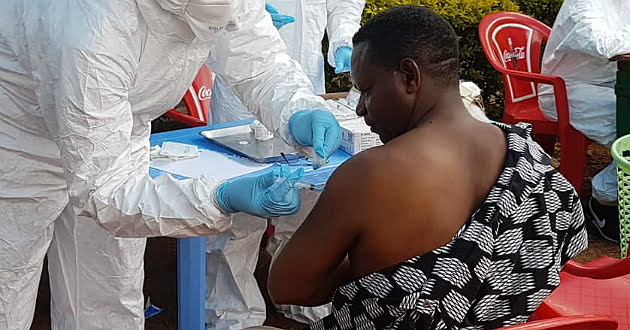The Democratic Republic of the Congo (DRC) is current facing an Ebola outbreak. There were 52 confirmed and probable cases as of August 11th, and 39 people have died.
The problem is not that Ebola is back. We knew it would be back – Ebola has wild animal reservoirs, which means it can always come back. The problem is that all the effective ways to stop its spread depend on functioning health systems and the region in which this outbreak is occurring is beset by violent conflict that has disrupted the provision of health care.
This outbreak is in Mangina health area in North Kivu province in Northern DRC. North Kivu is one of the most densely populated areas of the country – 8 million people live there. It borders Rwanda and Uganda. And it’s not at peace. Northern DRC has been best by violence for fourteen years, in an evolving series on conflicts between government and opposition forces. The most recent deaths occurrent less than a week ago – on August 11, seven civilians were killed, possibly by rebels with the Allied Democratic Forces. The rebels have killed more than 1,500 people in the last two years.


This kind of violence causes population displacement – frightened people flee.
Controlling an Ebola outbreak in a mobile, frightened population is going to be tremendously difficult. The Ministry of Health of the DRC has proven that it can defeat Ebola outbreaks. Just last month, in partnership with the World Health Organization, an outbreak in a separate part of the country was successfully contained — despite the fact that the outbreak had spread to a major city.
But not all of the tools needed to stop the spread of ebola may be used if the outbreak occurs where there is ongoing conflict
Fighting it requires that patients suspected of Ebola are rapidly quarantined into appropriate facilities, diagnosed, and provided with appropriate treatment. Dead bodies need to be carefully handled.
If quarantine facilities are unsafe or uncomfortable, people will not voluntarily report to them when they show symptoms of Ebola. If they’ve been displaced to a new location, they may not even know where to go. Ebola diagnosis requires that health care providers know what to look for and have access to appropriate blood tests. Both provider training and the provision of blood test supplies are affected when violence impedes safe travel, as are the supplies and equipment required for Ebola care. Treatment requires bulky, expensive personal protective equipment for health care providers and steady supplies of treatment consumables such as rehydration solutions.
The best practice in stopping Ebola from spreading is use of an experimental vaccine to “ring-fence” the outbreak. This requires detailed epidemiological data on where Ebola patients are living in order to vaccinate the communities around those patients – data that is difficult to collect in a conflict situation. Vaccine teams may be unable to reach people at risk if violence prevents travel.
Public health success is not impossible in a conflict situation.
South Sudan has nearly eliminated Guinea Worm disease, despite ongoing violence. But it will need cooperation from all parties in the conflict for Ebola to be stopped Dr Tedros Adhanom Ghebreyesus, WHO Director-General, has called for free and secure access by all responders to the affected populations. “All of those participating in the response must be able to move freely and safely in conflict areas to do the work that is needed to bring the outbreak under control. The population must also have access to treatment centers that save lives and stop the spread of disease.”
Time will tell if that can be done.
Latest WHO numbers:
Confirmed cases: 25
Probable cases: 27
Total cases: 52
Deaths: 39 (12 confirmed, 27 probable)
